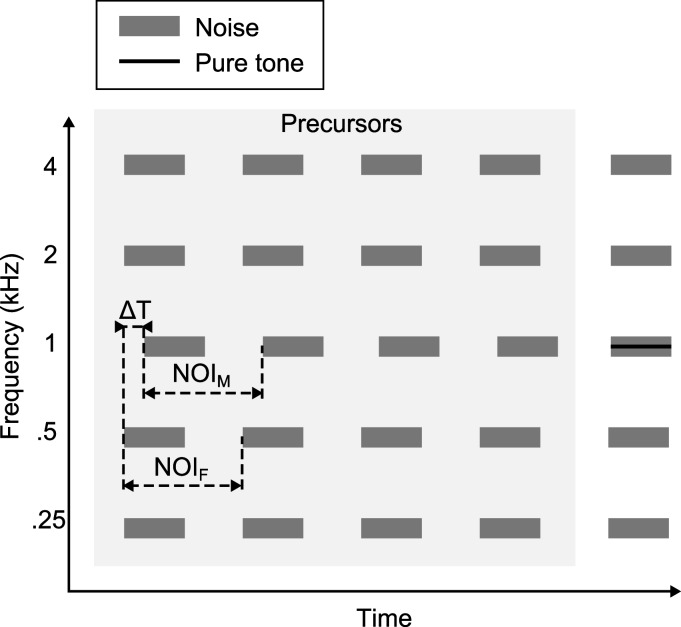Figure 1.
Schematic representation of the stimuli used in experiment 1. Five narrow-band noises were presented at octave frequencies between 0.25 and 4 kHz. Each noise burst repeated five times. During the final noise burst a target signal (1-kHz pure tone) was embedded in the central noise band. The final noise bursts were always presented synchronously, but the temporal relationship between the central masking noise-band (MN) and the flanking noise-band (FN) precursors (highlighted in light gray) could be varied. The NOIM and NOIF represent the onset-to-onset time between successive MN and FN bursts, respectively. The value of ΔT represents the constant onset asynchrony between the MN and FN precursors in conditions where the NOIM and NOIF were equal. In the sketched example NOIM = NOIF and ΔT ≠ 0 ms.

